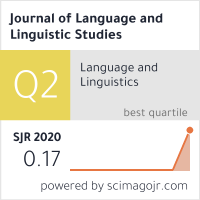A Study On Audio Based Tactile Model (ABT) In Learning Human Organ System Among Children With Visual Impairment
Abstract
A study was conducted among 30 secondary level students with visual impairments in four special schools inChennai to facilitate learning science concepts. Traditionally, Science was considered a complex subject, and it is more difficult for the students who have difficulties in vision.The aim of this study was to develop an adaptive teaching-learning material, namely the Audio-Based Tactile (ABT) Model, to teachthe Human organ System.Purposive sampling technique was used to identify and assign the participants. The Audio Based Tactile Material was prepared in both English and Tamil language with the detail of a human organ (Digestive System). The students were allowed to learn it individually for a period of 2 months. A tool was developed and standardized to conduct pre and post test scores, and Quasi-Experimental method was followed. The t-test results for pre and post test evaluation were significant at 0.05 level,revealing that the ABT Model was effective in learning Human Organ System (Digestive System) among students with visual impairments. The Audio Based Tactile teaching materialpositively impacts learning achievements with high enjoyment and curiosity.
Keywords
Full Text:
PDFReferences
Arlinwibowo, J.&Retnawati, H. (2015). Audio, tactile teaching material of visual impairment students, International Journal on New Trends in Education and Their Implications, 6(4),1-25 ISSN: 1309-6249.
DeFreitas Alves, C. C., Monteiro, G. B. M.,Rabello, S.,Gasparetto, M. E. R. F. &de Carvalho, K. M. (2009). Assistive Technology Applied to Education of students with visual impairment. Rev PanamSalud Publica/Pan Am J Public Health, 26(2),148-152
Kızılaslan, A. (2019). Linking Theory to Practice: Science for Students with Visual Impairment,Journal of Science Education International,30(1), 56-50.
M.Suhin&Yorek, N. (2009).Teaching Science to Visually Impaired Students: A small-scale Qualitative Study,US-China Education Review, 6(4)ISSN1548-6613.
McCarthy, C. (2005). Effects of Thematic-Based, Hands-On Science Teaching versus a Textbook Approach for Students with Disabilities. Journal of Research in Science Teaching, 42, 245-263.
Moreland, L. M. (2015), Science for Visually Impaired students and Accessible Technology. Theses, Dissertations, and Capstones. Paper 978.
Stefanich, G. P. & Norman, K. I. (1996). Teaching science to students with disabilities: Experiences and perceptions of classroom teachers and science educators. A special publication of the Association for the Education of Teachers in Science.
Swarup, S &Bhan, S. (2006). Information Processing and Knowledge Representation in Persons with VisualImpairment. Retrieved September 3, 2014 from dari http://icevi.org/publications/.
https://iopscience.iop.org/article/10.1088/1742-6596/1227/1/012035
https://scielosp.org/article/rpsp/2009.v26n2/148-152/en/
http://pantaneto.co.uk/science-for-students-with-visual-impairments-teaching-suggestions-and-policy-implications-for-secondary-educators-david-d-kumar-rangasamy-ramasamy-and-greg-p-stefanich/.
Refbacks
- There are currently no refbacks.

This work is licensed under a Creative Commons Attribution-NonCommercial-NoDerivatives 4.0 International License.
ISSN 1305-578X (Online)
Copyright © 2005-2022 by Journal of Language and Linguistic Studies
